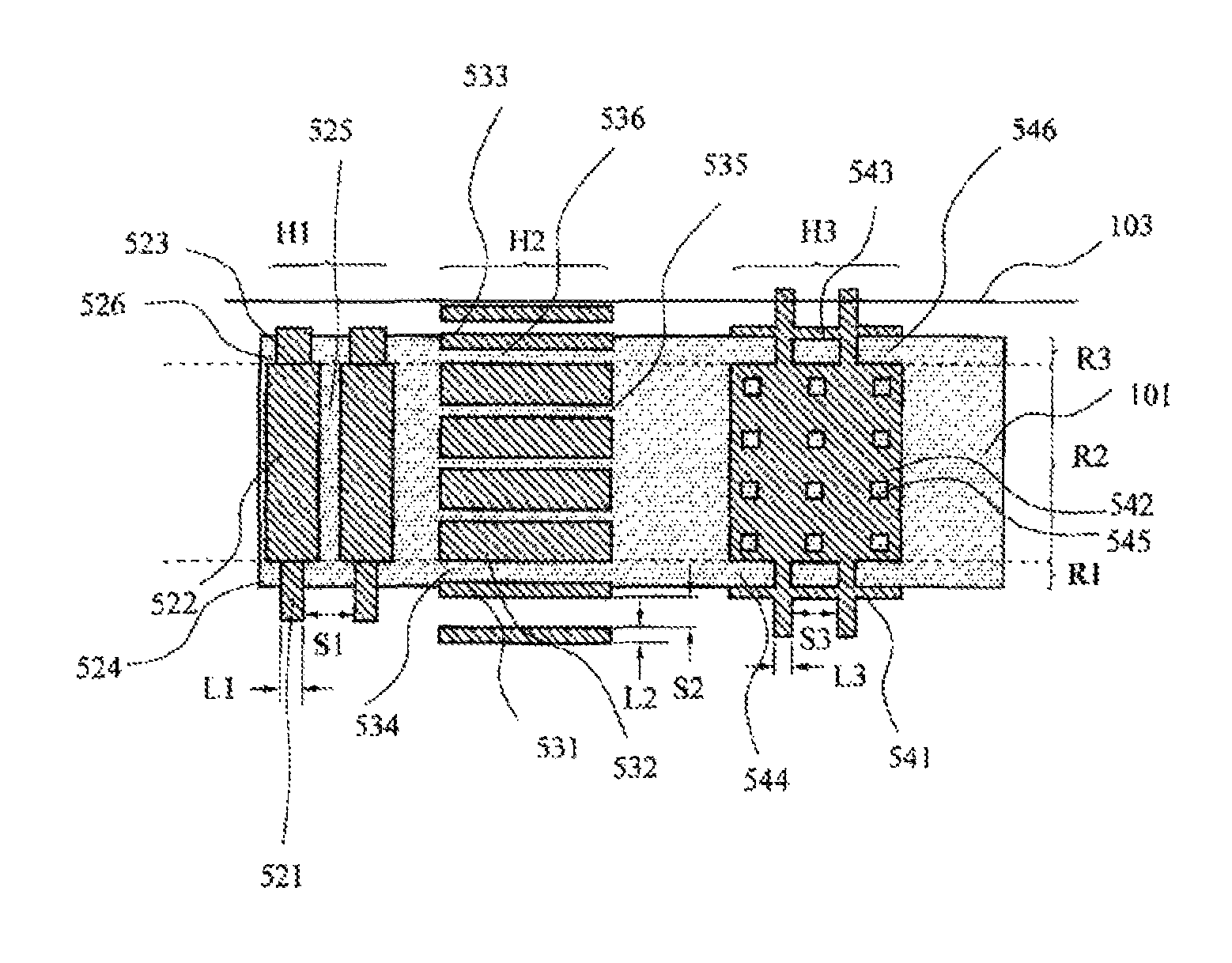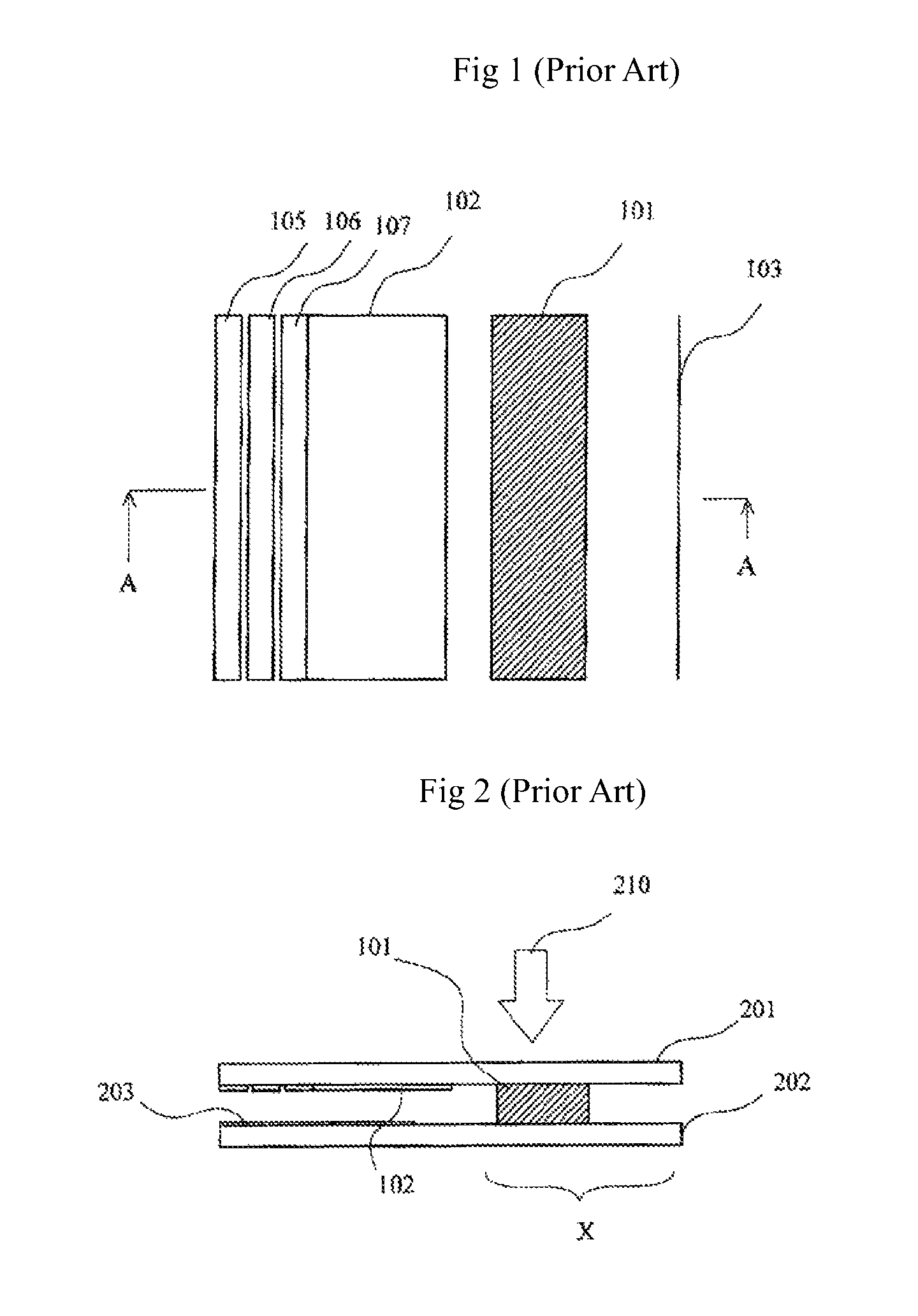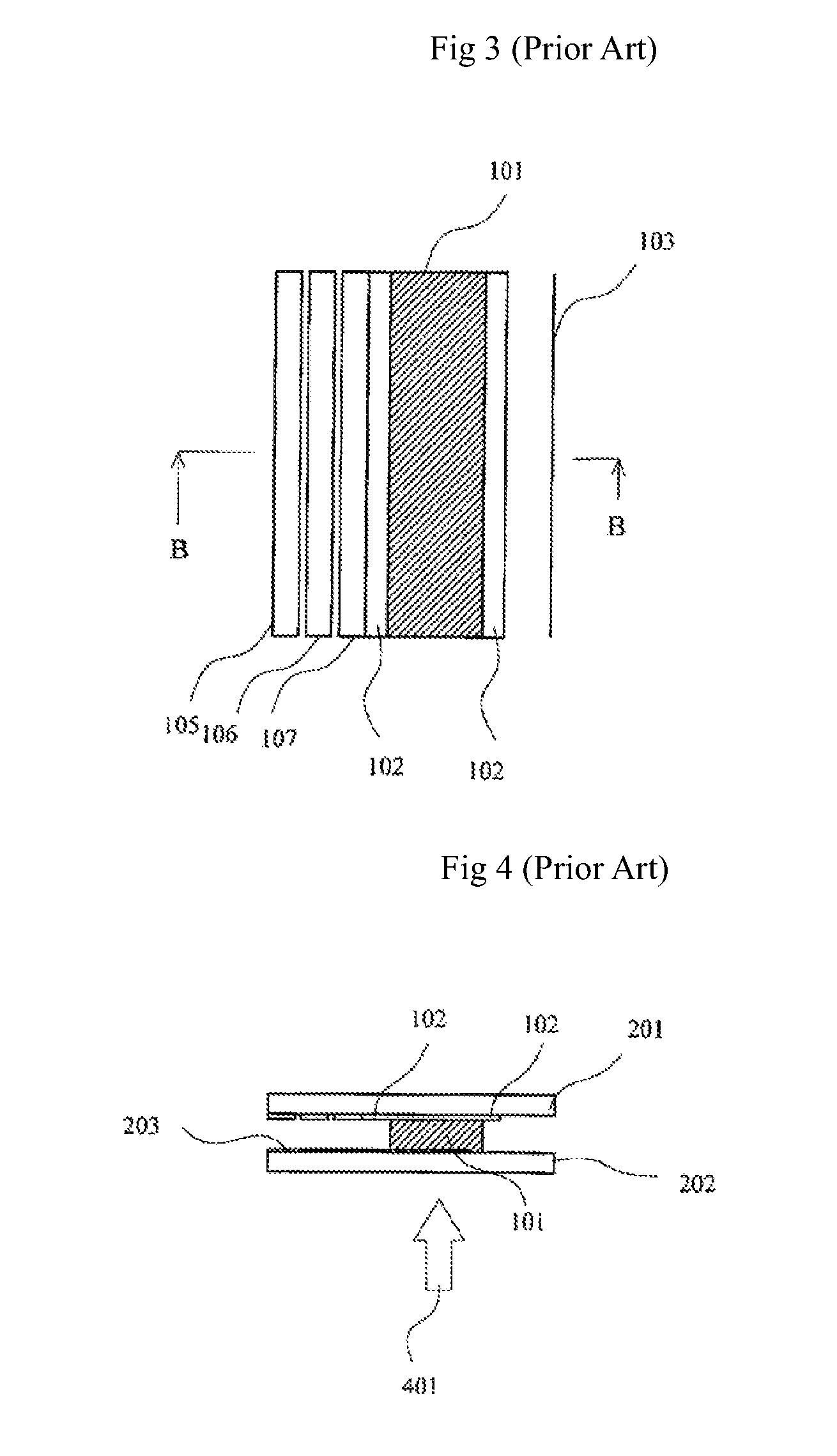Liquid crystal panel for liquid crystal display device
a liquid crystal display device and liquid crystal panel technology, applied in the field of liquid crystal panels, can solve the problems of uniform peripheral portion of the liquid crystal panel, insufficient large space at the peripheral area of the pixel region, waste of space, etc., and achieve the effect of decreasing the frame of the display device and increasing the width of the metal wiring
- Summary
- Abstract
- Description
- Claims
- Application Information
AI Technical Summary
Benefits of technology
Problems solved by technology
Method used
Image
Examples
Embodiment Construction
[0085]The embodiments of the invention will be described with reference to the drawings as follows.
[0086]FIG. 5 is a plan view describing conceptually the wiring structure of a liquid crystal panel according to an embodiment of the invention. In FIG. 5, 101 is a seal material, 103 is a cut-off line of the substrate, R1 is an adjacent region of the seal material, R2 is a middle region of the seal material, R3 is an outer region of the seal material, H1 is a wiring structure when the metal wiring and the seal material are intersected, H2 is a wiring structure when the metal wiring and the seal material are disposed in parallel, H3 is a wiring structure when the metal wiring and the seal material are superposed, 521 is metal wiring in the adjacent region under the condition of the wiring structure of H1, 522 is metal wiring in the middle region under the condition of the wiring structure of H1, 523 is metal wiring in the outer region under the condition of the wiring structure of H1, 5...
PUM
| Property | Measurement | Unit |
|---|---|---|
| width | aaaaa | aaaaa |
| width | aaaaa | aaaaa |
| width | aaaaa | aaaaa |
Abstract
Description
Claims
Application Information
 Login to View More
Login to View More - R&D
- Intellectual Property
- Life Sciences
- Materials
- Tech Scout
- Unparalleled Data Quality
- Higher Quality Content
- 60% Fewer Hallucinations
Browse by: Latest US Patents, China's latest patents, Technical Efficacy Thesaurus, Application Domain, Technology Topic, Popular Technical Reports.
© 2025 PatSnap. All rights reserved.Legal|Privacy policy|Modern Slavery Act Transparency Statement|Sitemap|About US| Contact US: help@patsnap.com



